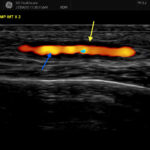Clinicians should not rely on glucocorticoids as a first-line treatment of SARD-ILD in patients with systemic sclerosis, according to a strong recommendation in a new ILD treatment guideline from the ACR and CHEST. The guideline is one of two addressing the screening, monitoring and treatment of patients with interstitial lung disease (ILD) secondary to systemic autoimmune rheumatic diseases (SARDs).








